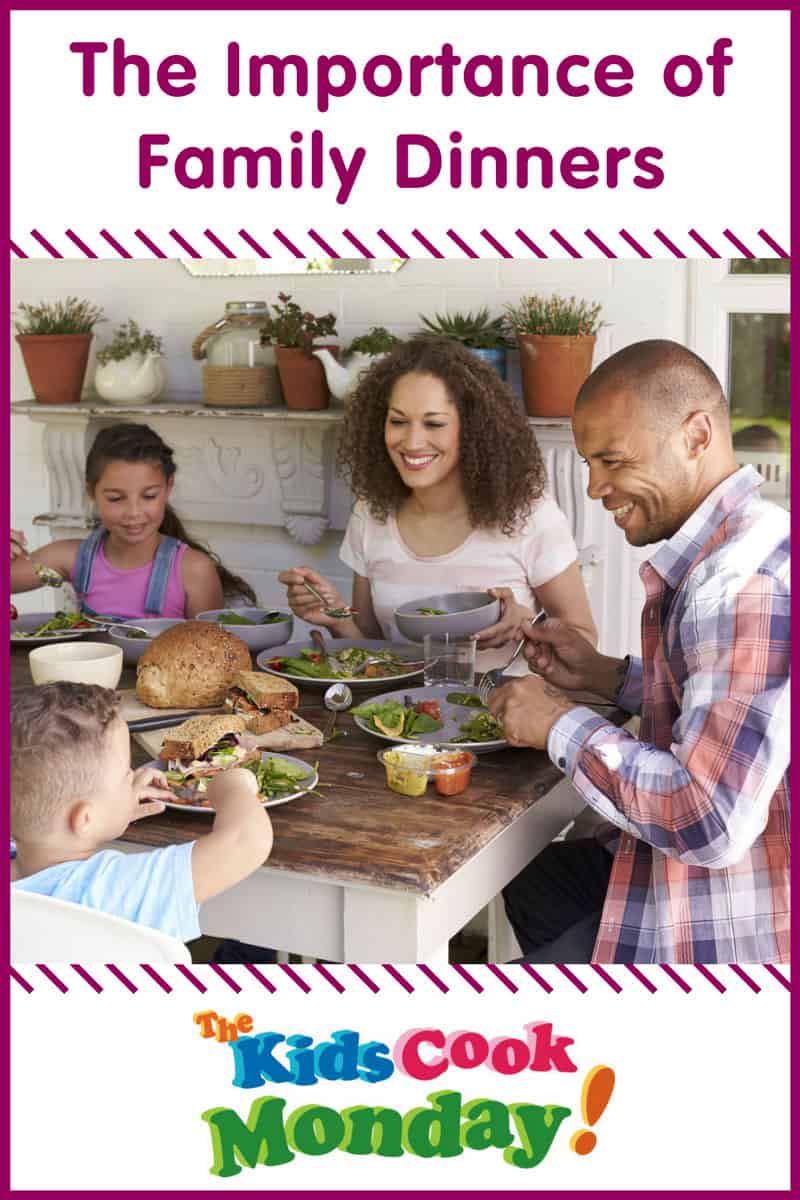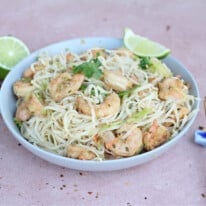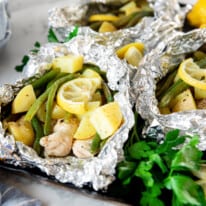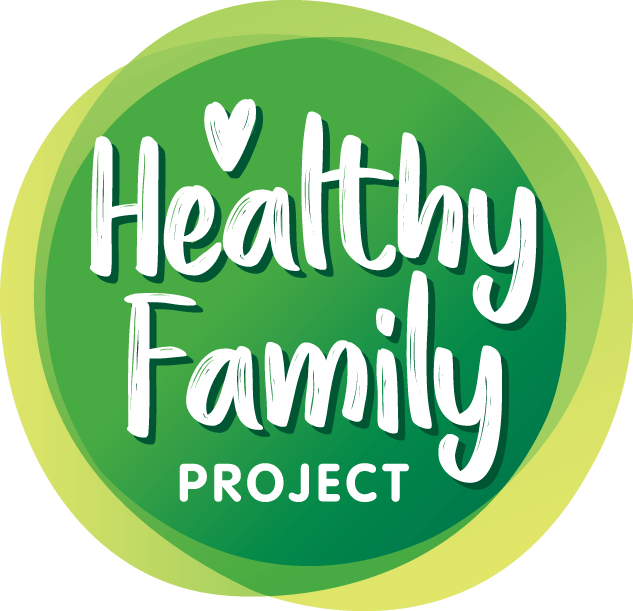The Importance of Family Dinners

1. Why is it important for families to cook together?
Life is so fast-paced these days, and cooking together provides a wonderful opportunity to slow down and spend quality time together as a family. It’s also a great opportunity for children to learn the basic cooking skills they’ll need later in life so they won’t have to rely on fast food, and of course, meals you cook from scratch are almost always more nutritious than anything pre-prepared.
2. What are a few easy way to get kids involved in cooking?
I always say to start at the grocery store. Head to the produce section and tell the kids they can pick out any item they want! Then, check out a site like Produce for Kids or The Kids Cook Monday for a simple dinner recipe featuring that item. Kids are so much more likely to enjoy cooking and trying healthy foods when they’re given some ownership over the meal. Once you’re in the kitchen, give your kids tasks according to their ages and motor skills. For little kids, tasks can be as simple as pushing the button on a food processor or tearing up some leafy greens with their hands. We have more information on tasks appropriate for different age groups on TheKidsCookMonday.org.
3. Are there safety tips you can share that parents should keep in mind when cooking with kids?
Parents may be afraid to let their kids handle knives, but there are ways to make it perfectly safe. Plastic or metal butter knives can cut lettuce, herbs, tomatoes, cucumbers, avocados…almost anything except tough squashes and root vegetables, really. But it’s important to teach kids how to properly hold the knife so they’ll be ready to use a real knife when they’re older. I like the “bear claw” method. Make a claw with the fingers of the hand you’re using to hold the food, which keeps little fingertips away from the blade. Then, hold the knife in your dominant hand, place the tip firmly on the cutting board above the food and “chomp” down in a lever-like motion. Repeat!
Cooking is also a great time to learn the importance of handwashing. I always have kids wash their hands well before beginning any recipe, and again whenever a little finger finds its way into a mouth or nose (which can be often!)
4. Why is it important for families to sit down to dinner together and how can busy families make this happen?
Sitting down to a meal together is true, quality family time. It’s a chance to check in with each other, laugh, and hear about everyone’s days. No screens allowed, of course! Parents who often eat with their kids report feeling more connected to their children’s lives, and kids report feeling less stressed. As for how to make it happen, I’m a big fan of the prep-in-advance concept. Use the weekend to map out your meals, go shopping, and get a lot of the washing and chopping out of the way so that it’s easy to toss a few ingredients together for a weeknight meal. Cook up a big batch of beans and use them for tacos one night and soup the next. There’s no rule that says home cooking has to be complicated or take a lot of time. In my opinion, the simpler, the better!
5. Obviously, we love fruits and veggies. Do you have any tips on how to incorporate more fruits and veggies into meals?
If you buy them…they will be eaten! Parents are often reluctant to buy much produce out of fear that it will go bad before they get a chance to use it. I say use that fear to your advantage! If it’s in your fridge and threatening to go to waste, you will find a way to use it. Seeking out plant-based recipes and being flexible in your cooking are also important tips. Say a pasta recipe only calls for onions and tomatoes, but you also have mushrooms on hand. Throw them right on in there! And if you really don’t think you’ll use what you bought, you can almost always just chop it up and toss it in the freezer for later use in a soup or stew. Or just buy frozen items in the first place, they’re just as nutritious.












Family is the most important part of our life; since from the very beginning we need the support of family till the end of our life. In every moment doesn’t matter whether it is sorrow or happiness; we need the support of our families. Therefore we can say that the importance of family is really matters a lot and the quality of time we spend with our family is really brings cheerful moments for us; but as we know the fact that due to professional attitude slowly we lost the value of emotions and feelings from our life and which directly or indirectly matters in our family relationships. Here from this article we learn some facts that help to develop our bonding with our families.